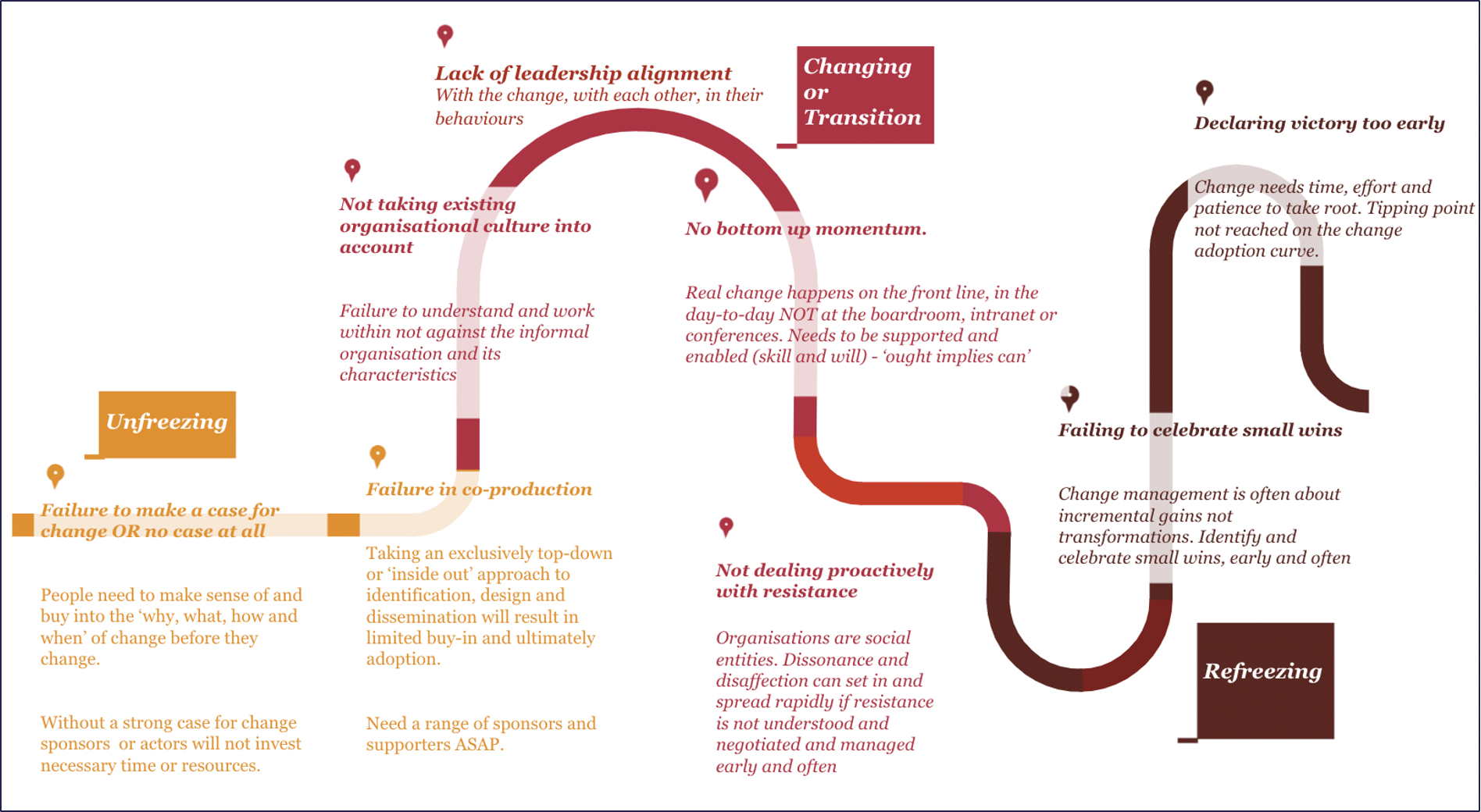Rethinking strategy development: it’s not about a shiny document
Why do strategies end up collecting dust on a lonely shelf? Rich Taunt blames a failure to understand why change fails, and explains that how a strategy is developed is just as important as the end product.
‘Strategy’ has a lot to answer for. The NHS, as with the wider world, is awash with them. From the NHS Long Term Plan to Bill Gates’ Wordle strategy (start with ‘audio’ apparently), it’s hard to get through a day without someone deciding that the answer to any problem is to have a new strategy.
Sounds good. Sounds decisive. Sounds clever. But what if we’ve all been going about it wrong? And how do we put it right?
As I’ve previously written about, strategy is beset with problems. We spend too little time defining what we mean, ending up with documents that are little more than a confused mess. We think far more about the nice, shiny ‘what’ and not nearly enough about the far less glamorous ‘how’. And all too often we write documents more designed for robots than people.
Why change fails
But the real reason strategies end up impotent, collecting dust on a lonely shelf, is because they fail to understand why change fails. Our own review of the (extensive) change literature gives a rather gloomy story that will be familiar to many (change failure bingo anyone?).

This isn’t rocket science – from failing to make the case for change, to not taking existing culture into account, to failing to celebrate small wins – these are all factors we’re well aware of. But ‘strategy’ often sees overcoming such barriers as an after-thought, something to be considered in a ‘to be published later’ implementation plan.
One example: in 2014 Monitor (God rest its soul) published a strategy development toolkit for Trusts. It’s 374 slides of cleverness. But it isn’t until page 347 that it acknowledges that most change fails because of cultural factors, and that, er, maybe you should try and have a comms plan or something.
Engaging with culture
Given this, it’s no surprise that, as Peter Drucker famously said, culture eats strategy for breakfast. It can see it coming – for 346 slides! – licking its lips.
Which brings us back to what strategy is in the first place. Any strategy that doesn’t engage with culture from the very beginning will fail – and so isn’t really a strategy in any meaningful sense at all.
To misquote Mike Tyson, it’s not good enough to have a plan that doesn’t deal with being punched in the mouth.
Importance of process
At Kaleidoscope we start at the other end of the telescope. Crucially, we see the process by which strategy is produced as important as the document that pops out at the end.
Why? Because how you develop strategy is an extremely powerful intervention in its own right. It presents all sorts of opportunities to make positive strategic and cultural change, not least:
- Signalling your values. It’s impossible to develop strategy in a neutral way. Whatever process you choose – darkened room or open process – it will give off hefty cultural pheromones as to what you really care about as an organisation.
- Involving those who will be key to its implementation. Any good strategy will require lots of people to do what they do differently. The traditional view of strategy is so strangely misguided because it sees the end of the process as the time to start talking about it. A different sort of process involves people at the very start.
- Strengthening relationships with partners and citizens. Every organisation in the NHS is trying hard (maybe too hard) to collaborate with others. Involving partners in a strategy process that shows humility, curiosity and openness is a gilt-edged opportunity to build the trust and mutual respect upon which successful collaboration is based.
We’ve now had the privilege of working with a wide range of organisations, including NHS Trusts such as Oxleas and South London and the Maudsley, and third sector such as the Stroke Association and Bromley Healthcare, to help develop strategy in a different way.
Our approach is about a number of key themes, including careful scoping of context, and putting staff at the centre of the process through deliberative democracy methods. We combine creative engagement and analytical rigour to ensure the right conversations happen, and make sure these insights are turned into future plans capable of having significant impact.
‘Strategy’ doesn’t have to be a byword for management-speak-nonsense. It can bring energy, joy and change that can transform lives. But it starts with rethinking what it’s really there for.
Join the conversation
If you want the chance to discuss the merits of strategy, hear from some brilliant speakers, and get some practical tips about strategy in today’s NHS, join our free digital event on Monday 10 July.
And if we could help you rethink strategy for your organisation, get in touch. We’d love to have a coffee (real or virtual) and talk through what matters most to you.


Comments